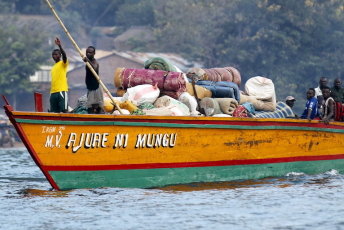At 26, Hamza became addicted to pufa after just one hit. He was soon spending all his money on the drug, stealing from his family to fund his habit. He also lost his job and his fiancée left him. Now homeless, he spends his days living for his next dose.
Pufa – also known as l’poufa, l’boufa, sisa or ‘cocaine for the poor’ – is a devastating synthetic drug made from cocaine or crystal methamphetamine waste cut with additives such as battery acid, engine oil, shampoo, salt, baking soda and ammonia. It is cheap, easy to obtain and highly addictive. Like crack, pufa is smoked through a homemade waterpipe. In October 2023, a 25-year-old man died from an overdose during a pufa party.
Pufa leads to heavy dependence very quickly – one to three doses are enough to hook the user. The effects of pufa are devastating. It causes serious psychological and physical damage, and can result in aggression and violence. The drug is associated with schizophrenia, paranoia and depression. It causes skin infections, ulcers, cardiovascular disease, kidney problems, fever, severe headaches, insomnia, convulsions, arrhythmia with risk of stroke, heart attack and pulmonary distress.
The drug, homemade crystal meth, first appeared in the United States in the 1980s. It spread to several European countries in the 1990s and has many names – ‘Krokodil’ in Russia and ‘3-MMC’ in France. It became popular in Greece when people turned to ‘sisa’ drugs as a coping mechanism during the economic crisis that hit the country in the 2000s – it was known as the ‘austerity drug’.
How pufa arrived in Morocco is unclear. Some say it first appeared in Tangier in the mid-2010s, under the name Lbasé, through people coming from the north of the country to seek treatment in drug rehabilitation centres in Casablanca. Others believe pufa was introduced by drug dealers in disadvantaged areas mixing cocaine or crystal meth leftovers with other chemical products to bulk up their drug stocks. Many pufa dealers were initially involved in cocaine trafficking before turning to pufa.
Nonetheless, there seems to be a parallel between Greece and Morocco. In Greece, the economic crisis of the 2000s led to the consumption of pufa. In Morocco, the increased use of the drug coincided with COVID-19. Pre-pandemic, cocaine was less widely available and consumed only by those who could afford it. During the pandemic, drug dealers began mixing cocaine waste with other products. This lowered the price and made it more accessible to a wider population.
Since COVID-19 many people have been admitted to drug rehabilitation centres, with more than 3 000 addicted people currently registered in these centres in the northern part of Morocco.
Unlike cocaine, which is imported from Latin America, pufa is manufactured locally. Some users buy the ‘pebble’ – made of different chemical components – directly from drug dealers, while others make it themselves, as it is easy to do.
Due to its low price, just US$0.50 (50Dhr) per gram, pufa is easily accessible in Morocco. It is widely available among the youth, including school children, and is increasingly affecting poor people. Because of its highly addictive nature, a growing number of young girls are becoming involved in the sex trade to pay for their daily intake. Some users have sold their cars to be able to fund their habit.
Between 4 August and 2 September, 112 pufa drug traffickers were arrested in different Moroccan cities and nearly 1.5 kg of the drug was seized. This law enforcement intervention also dismantled six criminal drug rings operating across the country. In July, 15 people were arrested in Casablanca. At their hideout, police found the tools and ingredients to manufacture pufa. During the 2022 – 23 school year, security operations carried out at different educational institutions led to the investigation of 3 870 cases and the arrest of 4 286 suspects for dealing pufa.
In October, Moroccan security forces intercepted 1 371 kg of cocaine being trafficked into the country from Spain. While not all this stock may have been intended for the local market, it raises questions about the growing role Morocco is playing as a regional cocaine hub. The more cocaine flowing in and through Morocco, the easier it is for traffickers and dealers to manufacture and distribute pufa, compounding an already growing problem.
Despite these seizures and the number of cases processed, the authorities still have much to do to eradicate the problem. Unless rapid and efficient measures are taken, Morocco’s authorities could soon face a dramatic health crisis, and an increase in the number of violent and criminal incidents and activities associated with this drug.
Currently, consumers and small- to medium-scale traffickers can be sentenced to between six months and a year’s imprisonment, while major traffickers can theoretically be jailed for up to 30 years. However, they are usually only sentenced to a maximum of 10 years.
Strengthening the legal and institutional framework to more effectively deter drug traffickers would facilitate the fight against pufa trafficking. Stronger penalties for traffickers, especially those involved in cocaine trafficking or when it has been proven that they are (indirectly) responsible for a consumer’s death, could be an important first step.
On the health side, strengthening prevention, awareness and support systems for drug-dependent people could also help fight this growing threat in Morocco. Policies that allow the use of naloxone and methadone are essential to prevent and respond to drug overdoses and to treat drug use disorders. By prioritising these, non-governmental organisations, in collaboration with the Health Ministry, have already helped reduce the number of deaths due to overdose.
Morocco could, like Greece, also train communities, families and friends to build trusting relationships with drug users in order to eventually help them to accept treatment for their addiction.
Abdelkader Abderrahmane, Senior Researcher, ENACT, West Africa
Image: © Fadel Senna / AFP









